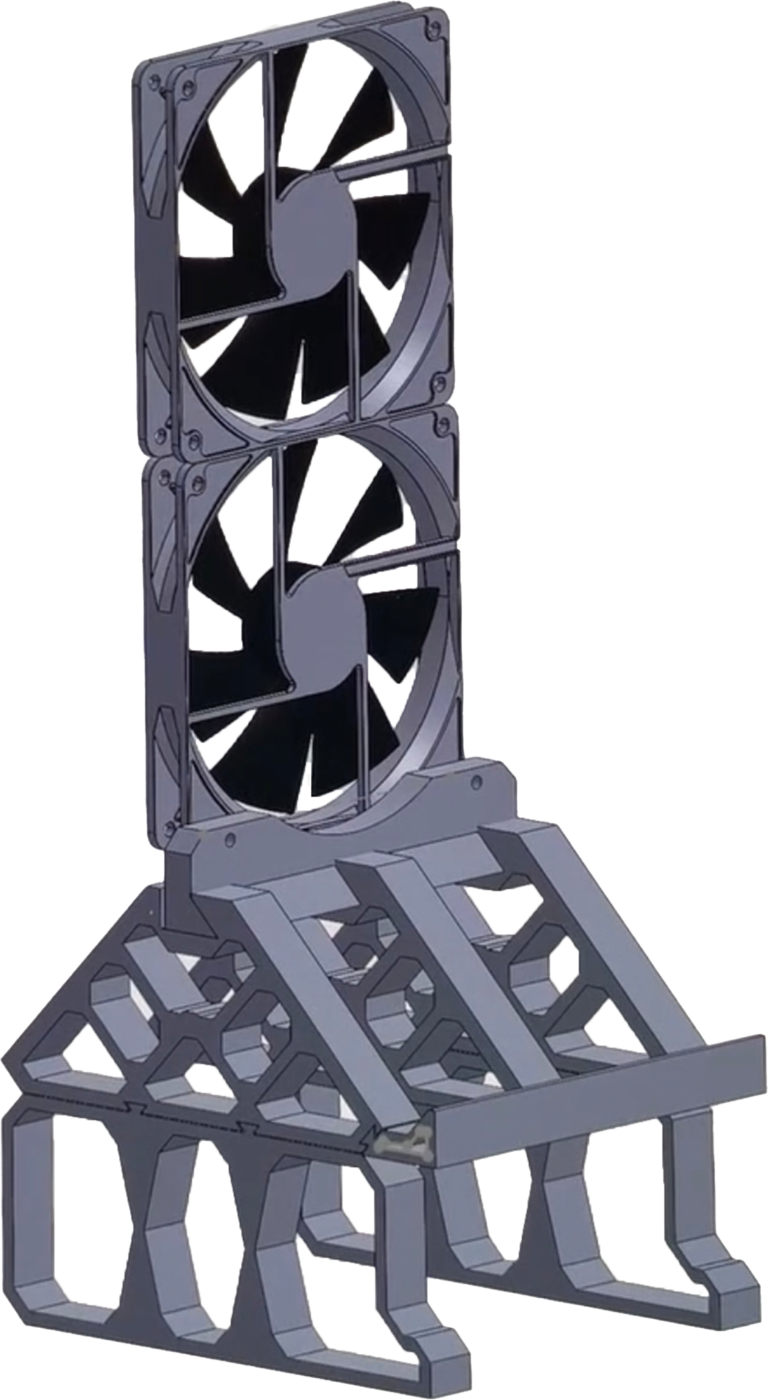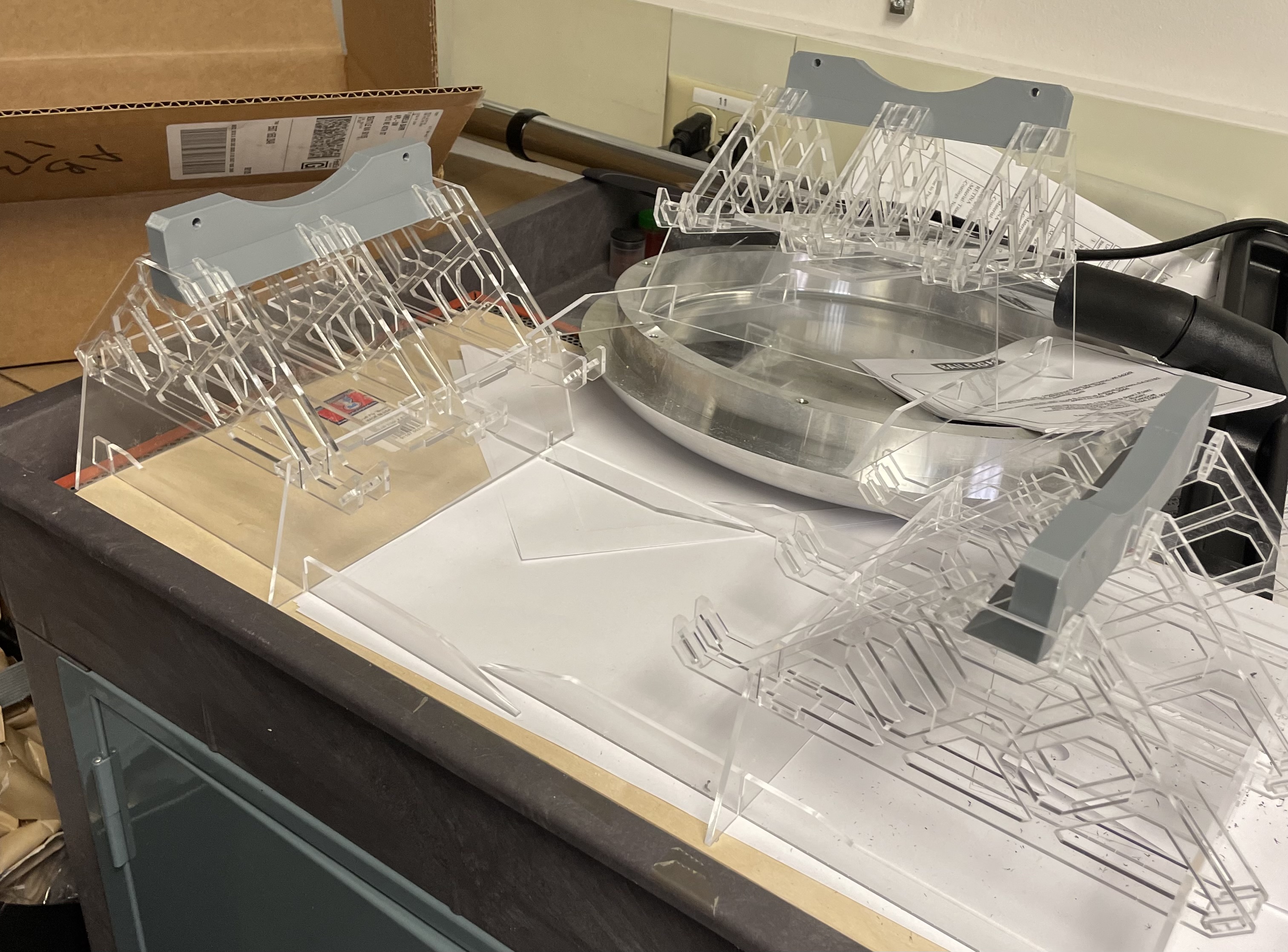Circuit Stack Mount
Applied Physics Lab
July – August 2022
CUI: Some details & drawings cannot be shared
Objective
For this project, I was tasked with designing a structure to hold up a single sonar so that the internal stack of circuit boards could be uncovered, tested, modified, and de/reconstructed with ease. Additionally, the fans provide basic thermal control with the amount of air being blown over the jets to ensure the components don’t overheat during tests.
It was also mentioned that different configurations of the structure would be helpful to the rest of the team. For example, the sonar would need to sit on the surface of the table for some tests and need to be perched up for a sensor to be able to run under the sonar face for others. In this project, I was able to explore working with several different features of a theoretical product and synthesizing them into a single solution.

Fully assembled laser cut base without fan mount bar
Iterative Process
My first design was an entirely 3D-printed approach, which easily demonstrates the shape of the design (CAD shown top right). While functional, the entire print up until the fans are roughly 6″ tall, which uses a lot of filament. Not only was it costly, but the printing time was much longer than desired with one full structure taking over a day to fully print.
Design Features
- Easy to assemble and switch between configurations
- Lowered the cost and manufacturing time allowing for simple & quick replication as needed
- Easier, more reliable, and faster to manufacture with laser cutter
- Visually more aesthetically pleasing
- Snug fit through acrylic have dovetail without snapping them with excess stress
- Solution for a difficult interface between two different materials without using permanent adhesives
- Multi-material design allows for improved performance through specific material advantages for different functions
- Simple assembly by hand without the need for tools or other adhesives to make it as user-friendly and reversible as possible

Initial design of entirely 3D-printed structure
Challenges
With the compartmentalized design, the separate pieces had to fit together snugly but also had to be loose enough to not break the delicate dovetailed connection points or relatively fragile acrylic material.
Manufacturing Time
Time was a main focus as in any project and a main factor in ditching the 3D-printed iteration. The team was unsure of how many they would utilize, so in case they required 10+ of these structures they did not have to wait weeks for them to be made. The laser-cut variation could create the pieces for one structure in less than half an hour, and the remaining 3D-printed mounting bar could be printed in an hour, making a new assembly possible within hours.
Balance & Stability
Placing a heavy metal sonar component onto a very lightweight acrylic mount made for a great issue in its balance. However, this was managed by adding the long feet to the base to counter any tilting or rotational moment.

Three assembled bases with encapsulated mounting bar
Key Takeaways
- Learning Experience using the laser cutter
- Attention to material weight and designing for balance in structural design
- Experience learning how to make low-cost, easily producible parts
